NASA rolls giant Artemis 2 moon rocket core off the factory floor for astronaut mission (video)
- Oops!Something went wrong.Please try again later.
- Oops!Something went wrong.Please try again later.
When you buy through links on our articles, Future and its syndication partners may earn a commission.
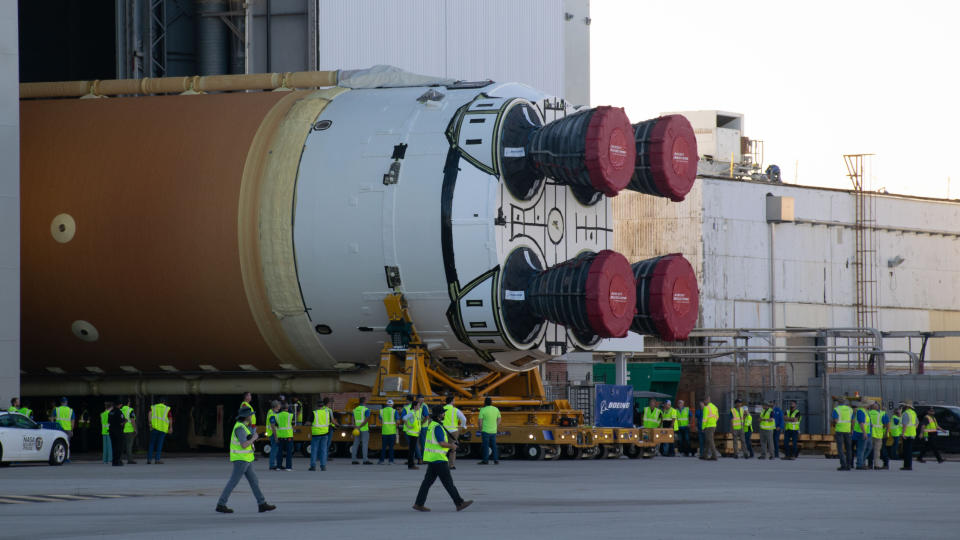
NEW ORLEANS — The core stage of the first rocket to launch astronauts to the moon in over 50 years has left its manufacturing facility, and is bound for vehicle integration and assembly ahead of its launch next year.
NASA's Space Launch System (SLS) Artemis 2 booster was rolled out of the space agency's Michoud Assembly Facility, in New Orleans today (July 16), 55 years to the day of NASA's Apollo 11 launch to the moon. The 212-foot (65-meter) booster, with its four RS-25 engines, was escorted a mile down the roadway to be loaded onto NASA's Pegasus barge for shipping to the Kennedy Space Center (KSC), in Florida, ahead of the second mission of the Artemis program.
The Artemis 2 mission will launch four astronauts around the moon in 2025, the first humans to make such a lunar trip since since the 1970s. Its SLS booster began that epic trip by rolling out of the tall hangar doors of Michoud's Vertical Assembly Center Tuesday, around 7:30 a.m. CDT (1230 GMT). A few hundred onlookers, mostly Michoud workers and their guests, gathered early in the humid New Orleans morning to witness their historic rocket stage transferred to the next stop in its journey toward a lunar mission liftoff.
The ceremonious event began with "Oh When the Saints" from the Roots of Music Marching Crusaders, a local school marching band, kicking off the morning's panel of speakers as the booster made its way past a large gate leading to the main parking lot. Nearly out of view, the booster turned onto the main road and rolled onward toward Pegasus.
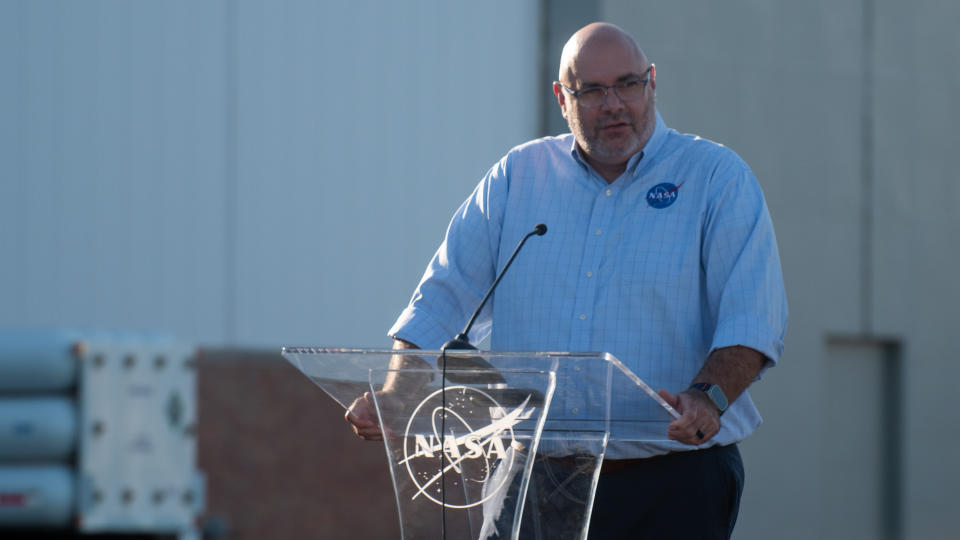
"For more than six decades, Marshall and Michoud have been a part of leading some of this nation's greatest achievements in space exploration, from the amazing accomplishments of the Apollo missions, through 135 shuttle missions, to the milestone that we're here today to celebrate," said Joseph Pelfrey, director of NASA's Marshall Space Flight Center, as he addressed the crowd during opening remarks.
Speaking to the crowd of mostly employess — engineers' whose hands have worked on this SLS booster for the past several years — he emphasized, "we're here today to celebrate the hardware, but it's the people that have brought us this far to achieve the milestones to help meet our mission goals."
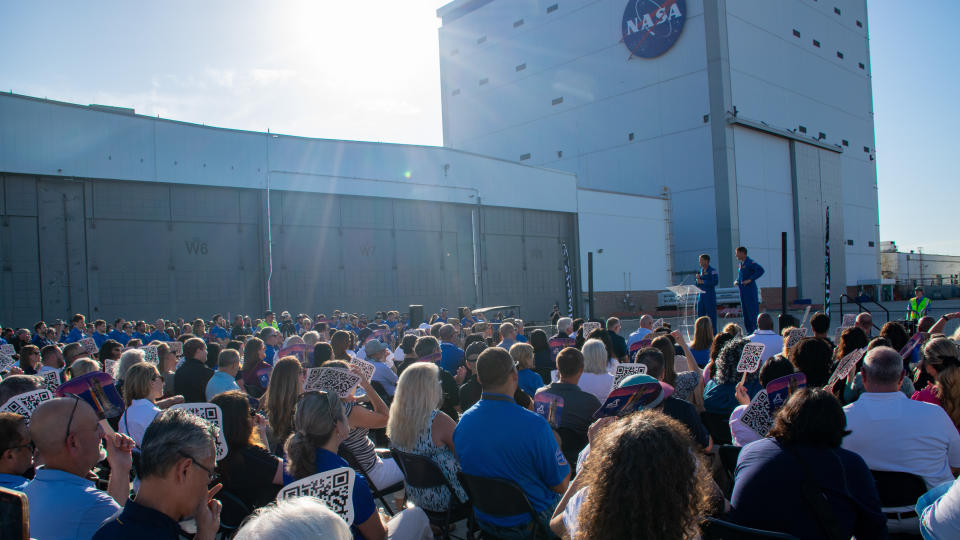
As small milestones are reached in the preparation for each Artemis mission, the Artemis Program as a whole comes into sharper focus. NASA's goal with Artemis is to establish a permanent presence on the moon near the lunar south pole, which contains high concentrations of water ice — an incredibly useful resource in space that could be used to create necessities from drinking water to rocket fuel. The idea is for such an outpost to serve as a springboard to hone technologies and requirements to someday replicate something similar on Mars, but that is still a long way off.
Related: 'That's part of space exploration': Artemis 2 astronauts unfazed by moon mission delays (exclusive)
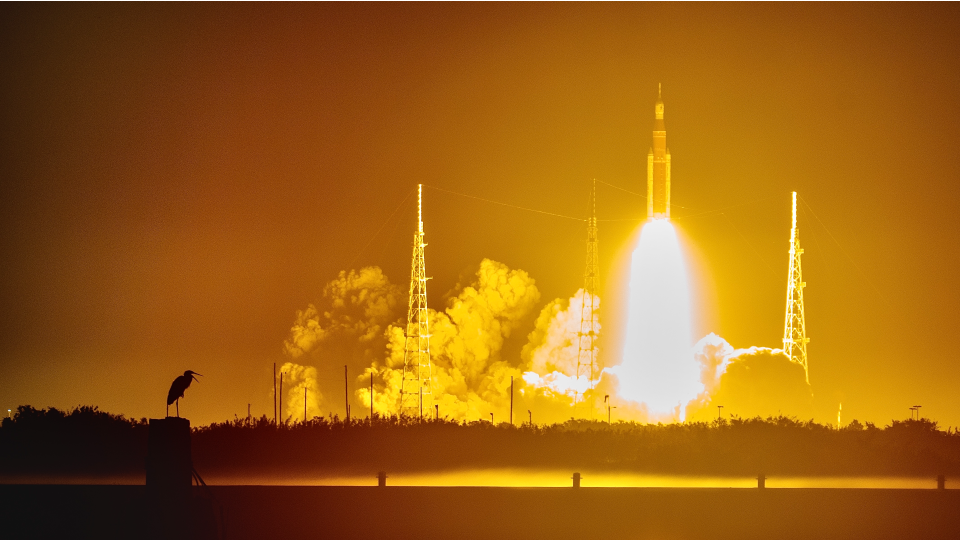
The first Artemis mission launched on Nov. 16, 2022, carrying an uncrewed Orion spacecraft into orbit around the moon. It returned back to Earth a few weeks later, on Dec. 11, for an ocean splashdown. Artemis 2 won't last quite as long (about 11 days), nor will it technically enter lunar orbit.
Instead, NASA astronauts Reid Wiseman, Victor Glover, Christina Koch and Jeremy Hansen, from the Canadian Space Agency (CSA), will launch on a lunar free-return trajectory around the moon, circling it once, before being gravitationally flung back toward our blue planet. Such a trajectory ensures Orion's return to Earth as the Artemis 2 crew performs the first crewed flight of the spacecraft.
When it launches, Artemis 2 will be the first excursion to carry astronauts within orbital proximity of the moon since the final Apollo mission in 1972, which is far from the only 'first' being checked off by the upcoming flight. Three of Artemis 2's four crew members represent demographics that will be flying to the moon for the first time in history. Glover, who is serving as mission pilot, will be the first person of color to fly around the moon, Koch, the first woman, and Hansen, the first non-American.
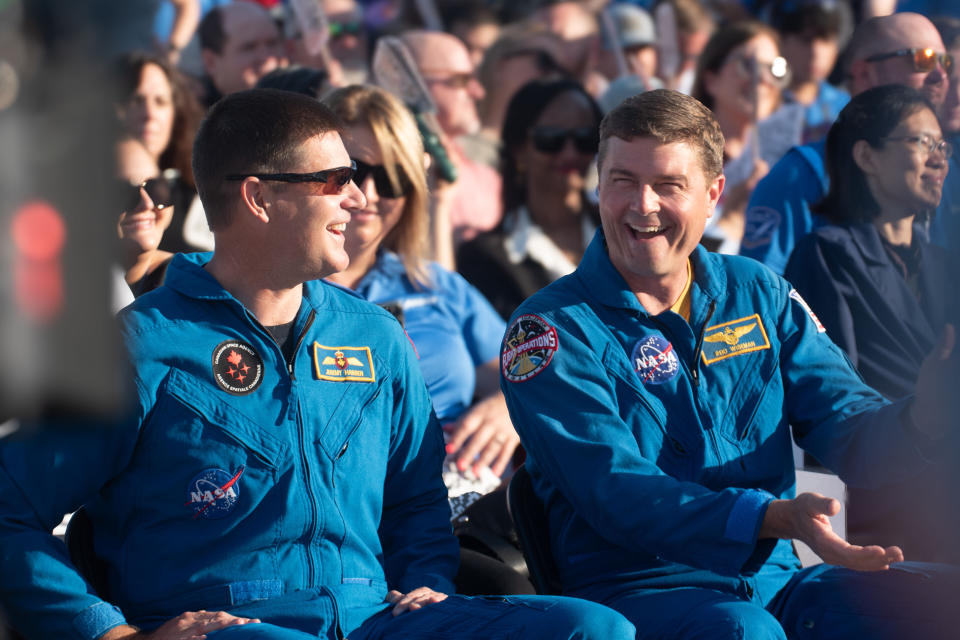
Wiseman and Hansen were in attendance as well, and marveled as they watched the booster that will fly them to space.
"I mean, that is, that is an awesome sight," Wiseman told Space.com. "We talk a lot about Artemis, about flying to the moon, and I think it gets lost sometimes that the hardware is here," he said, continuing, "the Orion spacecraft is at Kennedy Space Center. Our boosters are at Kennedy Space Center, we just watched the core stage roll by. Its next stop is Kennedy Space Center, all the parts are coming together. And when you actually look at the rocket, and you think about all the people here in Mississippi, in Louisiana, in Alabama, and then across the U.S. that have put this thing together, from dreaming it up to actually building it; it's what America is all about. I love it. It's wonderful," Wiseman said.
Following the success of Artemis 1 in 2022, Artemis 2 had been scheduled for November 2024, but NASA made the decision to delay the mission following the suboptimal performance of a few systems on the Orion spacecraft, including issues with its heat shield during reentry, as well as problems discovered with some of the life-support hardware built into Orion for Artemis 2.
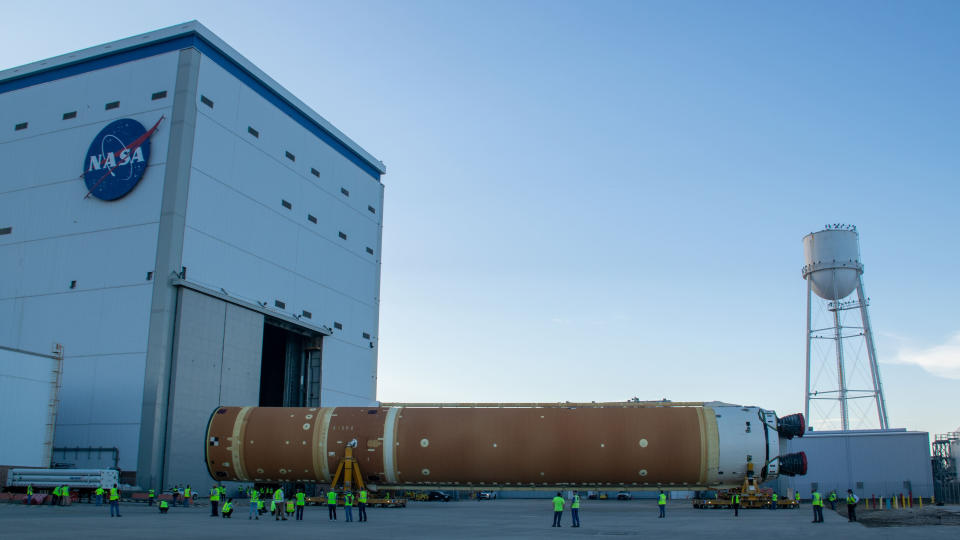
"If we want to accomplish great things, we all need to collaborate, all contributions need to be put into the effort. And this [booster] is just one tiny example of this. And it's a very visual example, as we throw four humans around the moon on Artemis 2," Hansen told Space.com after the booster had rolled out of sight.
With Artemis 2 slated for no earlier than September 2025, NASA also delayed the next mission by a subsequent year, aiming to launch Artemis 3 no earlier than September 2026. Though, that mission has its own hardware dependencies that may delay it further.
Artemis 3 is the first of the program designed to land astronauts on the lunar surface, but to do that, key pieces of mission hardware will also need to be finished — namely, SpaceX's Starship, which NASA has contracted for use as the mission's moon lander.
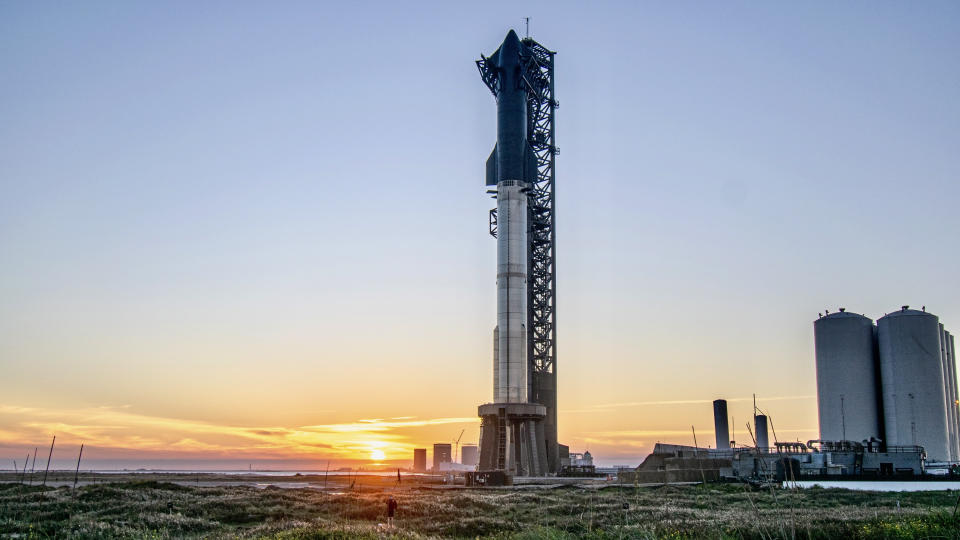
Test flights on Starship have already begun, with its fifth expected before the end of the summer, but for a spacecraft that has not yet even been to orbit, 2026 is an aggressive timeline. Newly-designed extravehicular activity spacesuits for Artemis 3 astronauts to don as they traverse the lunar surface are being built by Houston-based company, Axiom Space, are also still awaiting completion.
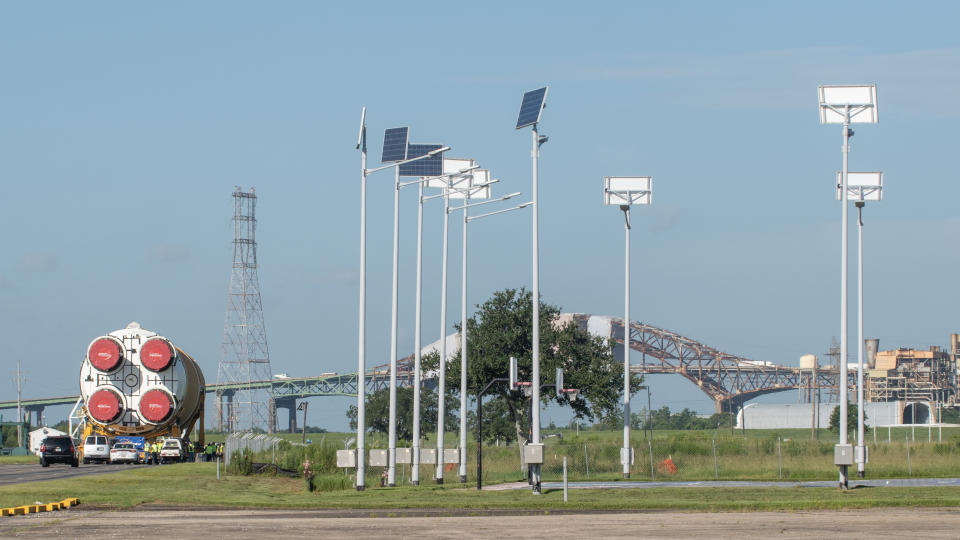
As for the Artemis 2 booster, after its 1-mile journey Tuesday morning, the rocket will rest aboard NASA's Pegasus barge as it departs the boggy waters of New Orleans for a 900-mile journey across the Gulf of Mexico to the Kennedy Space Center in Cape Canaveral, Florida. Pegasus is scheduled to arrive at that spaceport on July 23, where the stage will then be transferred off the barge and into the Vehicle Assembly Building, across the street.
Related Stories:
— 'We are ready:' New NASA documentary looks ahead to Artemis 2 moon mission (video)
— NASA's Artemis 2 moon mission: Live updates
Once inside, the booster will undergo a series of system and hardware checks before being outfitted with the remaining components and stages of the rocket, including its two solid rocket boosters, the Interim Cryogenic Propulsion Stage used to bring Orion to orbital velocity around Earth and for Orion's proximity operations demonstration, the Orion spacecraft itself and its service module.

